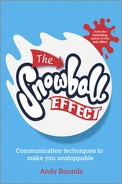7
When you want to have better, quicker meetings and conference calls
In theory, all meetings should help you do your job better.
In theory, they should help you make better decisions.
In theory, they should speed things up.
The reality is, of course, very different. In fact, just as we’ve all heard the phrase “Death by PowerPoint”, I’m surprised there isn’t a similar one: “Inertia by meetings”.
When you think about it, meetings should be like pit-stops in a Formula One race:
- They help you win.
- They’re fast and energetic.
- Everyone who’s there needs to be there.
- Lots of pre-work means the meeting is hyper-efficient.
- They’re action/improvement-focused.
- Things would be worse if you didn’t have them.

Instead, they’re often more like being forced to have Huge Sandwich Breaks while you’re busy:
- They interrupt what you’d prefer to be doing instead.
- They’re big and bloating.
- There’s only so many you can have before you start to work with less energy and focus.
- You didn’t choose them. In fact, you’d choose not to have them.
- 99% of them are totally forgettable, even though they were expensive.
- Worst of all: they make your day worse.

And do you know the weirdest thing of all? You know these meetings that people hate? Well, they organize some of them themselves.
One way to ensure your meetings are shorter and more interesting is to agree a set of guidelines that you’ll all follow. If you want universal buy-in, the key word here is “agree”, not “impose” (though you might end up with better guidelines if you suggest something and invite comment).
Examples I’ve seen work well include:
Good points, yes? So, either use them all or – if it’s too many for people to remember – choose a few, and then make them memorable, say by making their initial letters spell a word, like PALM (see chapter 9).
As long as they improve your meeting, everyone agrees with them and – critically – follows them, guidelines are essential in ensuring consistently high standards.
All the above guidelines work well. They’re so useful that I’m going to expand on a few of them in the next couple of chapters. I’ll start by addressing the biggest time-waster of all: how to get out of meetings you don’t want to go to.


